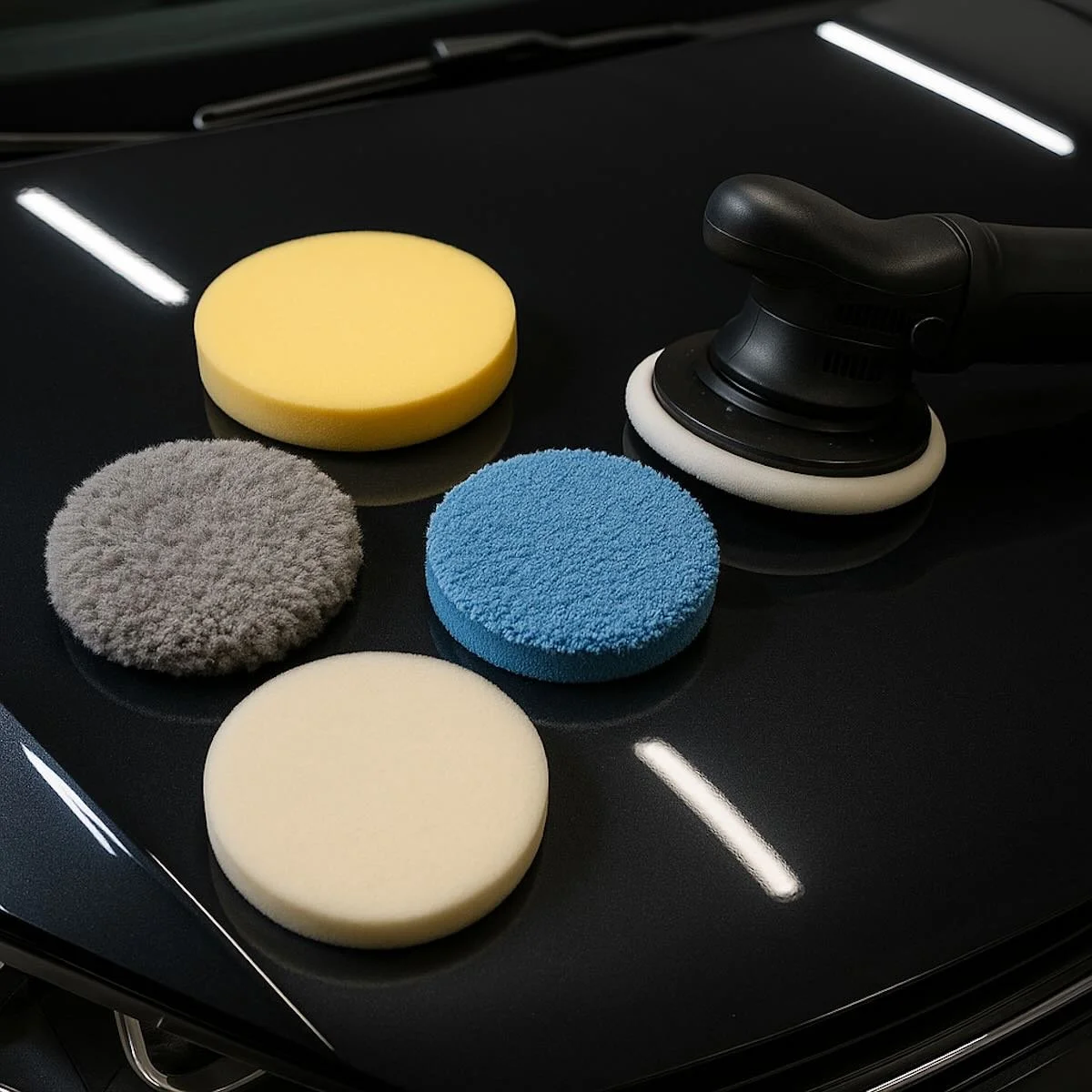How Many Times Can You Use a Polish Pad?
If you’re serious about car care and detailing, you’ve probably asked yourself this question: “How many times can you use a polish pad?” The truth is, polish pads are not one-and-done tools. With the right care and technique, they can be reused multiple times—saving you money while still delivering professional-grade results.
In this article, we’ll cover everything you need to know about polish pad lifespan, including the average number of uses, factors that affect durability, maintenance tips, and clear signs it’s time for a replacement.
Understanding Polish Pad Lifespan
Average Number of Uses
While there’s no one-size-fits-all answer, here’s a general guideline for how many times you can reuse common polish pads:
Foam Polish Pads: About 5–10 uses with proper cleaning and storage.
Microfiber Polish Pads: Typically 3–6 uses due to fiber breakdown and increased product absorption.
Wool Polish Pads: Can last 8–12 uses or more if maintained correctly.
These numbers are averages—your actual mileage will depend on how you use and care for your pads.
Factors That Affect How Many Times You Can Use a Polish Pad
1. Pad Material Quality
High-quality pads made by reputable brands last longer. Lower-cost pads may fray or lose their structure after just a few uses.
2. The Type of Product You’re Using
Heavy-cut compounds and aggressive polishes will wear down pads faster than finishing or ultra-fine polishes. If you’re doing heavy paint correction, expect fewer uses per pad.
3. Vehicle Size and Condition
Detailing a large truck or a vehicle with heavily oxidized paint puts more strain on your polish pad than working on a small, newer car with minimal imperfections.
4. Machine Speed and Pressure
Running your polisher at high speed with heavy pressure generates heat and friction, which shortens pad lifespan. Using a moderate speed and light pressure can extend pad life.
5. Cleaning and Maintenance Routine
This is the single biggest factor. Properly cleaning, drying, and storing your pads after every use dramatically increases their longevity.
How to Extend the Life of Your Polish Pads
Clean After Every Use
Rinse pads thoroughly with warm water and a dedicated pad cleaner or mild detergent. This prevents polish buildup, which can harden and damage the pad over time.
Use Multiple Pads Per Job
Rather than using one pad for an entire car, rotate between two or three. This prevents overheating and uneven wear.
Avoid Overloading the Pad
Use only the recommended amount of product. Overloading clogs pores, reduces polishing efficiency, and leads to early pad failure.
Proper Drying and Storage
After cleaning, gently squeeze out excess water and let pads air-dry completely. Store them in a clean, sealed container or bag to keep dust and debris away.
Label Your Pads
If you use pads for different compounds or vehicles, labeling them helps you keep track and avoid cross-contamination, which can also shorten pad life.
When to Replace Your Polish Pads
Even with the best maintenance, polish pads don’t last forever. Replace your pads when you notice:
Cracks, tears, or fraying edges
Loss of shape or structure (pad feels soft, collapsed, or uneven)
Persistent product buildup that won’t wash out
Reduced performance — it’s taking longer to cut, polish, or finish a panel
Continuing to use worn-out pads can lead to inconsistent polishing, paint damage, or wasted product.
Pro Tips for Maximizing Pad Performance
Invest in Quality Pads: Premium pads are made with denser foam, higher-quality microfiber, or better wool—lasting longer and performing more consistently.
Match the Pad to the Task: Don’t use a heavy-cut pad for finishing work or vice versa. Each task requires its own pad type.
Keep Pads Cool: Excess heat is a major cause of premature pad breakdown. Allow your pads to cool between sections or swap them out regularly.
Final Thoughts: How Many Times Can You Really Use a Polish Pad?
In most cases, a well-maintained polish pad can be reused anywhere from 3 to 12 times, depending on its material, the compounds used, and how diligently you clean it after each use. By practicing proper maintenance, rotating pads during jobs, and knowing when to retire them, you’ll save money and achieve consistently flawless results on your car detailing projects.

